
Discovery of the M31 [OIII] emission arc
Recently, a major discovery by an international team of amateur astronomers and scientists has become a huge online hit, and this new discovery is just located in one of the
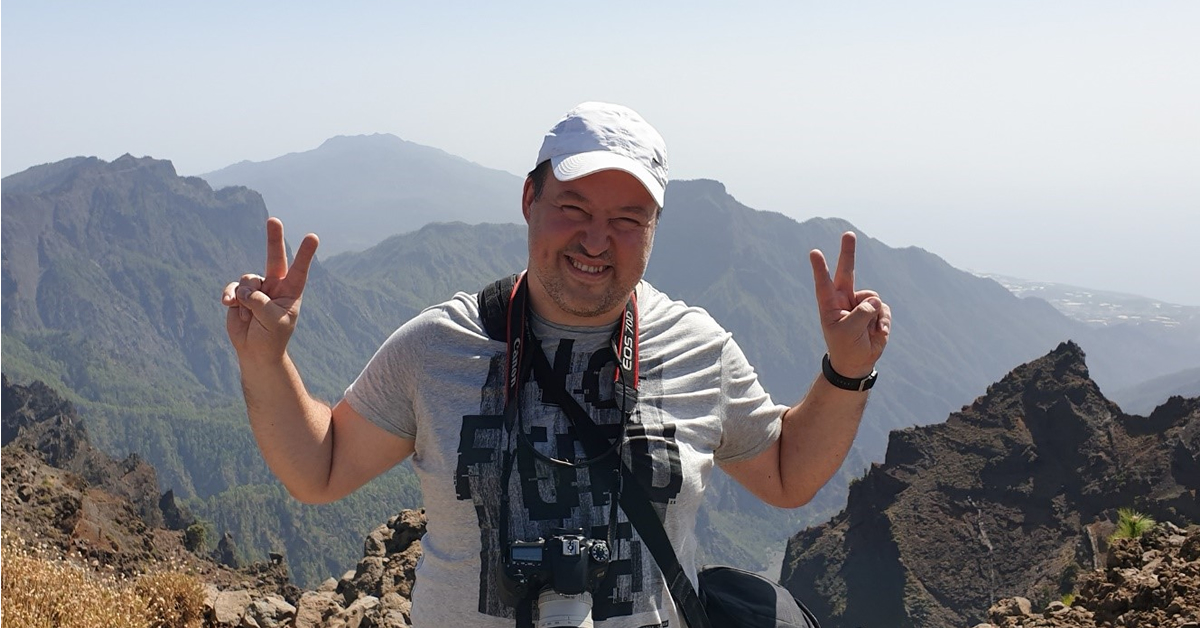
Paweł Radomski is the winner of ZWO 2020 ASIWEEK #28 and has brought us many extraordinary astronomy photos. To make our ZWOers know this excellent astrophotographer better, we make this interview. Let’s all take a look now.

Me near Observatorio del Roque de los Muchachos on LaPalma island
Hello. Thank you very much, pleasure is all mine. My name is Paweł Radomski, I’m a 40 years old photographer from Poland. I have been dealing with astrophotography since 2009, due to an impulse from a friend. I take photos mainly from Warsaw (the capital of Poland) in a narrowband, but for some objects I go under the dark sky. In addition to astrophotography, I’m interested in photography, martial arts, programming and board games, as well as RPGs.

Me on Caldera de Taburiente, LaPalma – one step from LaPalma Astronomical Observatory
Not at all, it was definitely not smooth. The weather in Poland is not kind for astrophotographers and we have very few cloudless nights. I believe that vdB141 is an object that every astrophotographer should have in his portfolio. Somehow I always avoided this area, until I finally decided to face it on a larger scale. At the end of 2019 I had only part of the material but I was determined to continue acquisition in spring 2020, if the weather would allow me to do it. Just after the galactic spring period, Cepheus constellation is low over the horizon, under Polaris. Gathering material in such conditions is very troublesome. Additionally, when collecting RGB, high cirrus clouds drifted across the sky. So I had luminance collected at a very low altitude and RGB through high clouds. The luminance processing turned out to be very pleasant (mainly due to the amount of material collected and the fantastic low read noise of the ASI1600MMC camera) but RGB was a test of processing skills. Fortunately, patience paid off and the desired effect was achieved.

vdB141 Luminance after using first iteration of Histogram Transformation
As I mentioned earlier, I take photos mainly from the Polish capital, the light pollution is huge here and the frames, even in narrowband do not have enough signal. To take a good picture I need to have a lot of frames. Collecting narrowband (Halpha, OIII, SII) requires a longer exposure time than LRGB. On average, I spend 20-35 hours of total exposure time on a narrowband photo. In LRGB relatively less, because I collect such material under much better sky. Of course, a lot depends on the object. To achieve good SNR (signal to noise ratio) on a bright object I must acquire less frames than if I would like to take a picture of a dark nebula. It is all about the knowledge of the sky – to know what lies around the main object. Generally, if I take more frames with longer exposure time will it help me show fainter parts of nebula or will that appear to be a waste of time (when there is nothing to show)?

NGC2264 and surroundings, my record of total acquisition time: 53h 35min from huge LP in Warsaw
That’s a tricky question 😊 I don’t have a favorite object, although I have a bucket list of astrophotography. The objects on the list are: Rho Ophiuchi area, the Magellanic Clouds, the Centaurus A Galaxy NGC5128 and Simeis 147. However, I love all kinds of dark nebulae, barely visible dust clouds – completely unattractive photos but to me it’s the hidden beauty of the universe. vdB141 is such an object, but in my wildest dreams I didn’t expect what I would register on my frames. I try to build my skill mainly to process dark nebulae and SHO compositions. My favorite constellation is Cepheus.

vdB152, my first attempt to photograph dark nebulae. Lack of good material caused a poor photo
I use two telescopes – the first, for wider fields is Sky-Watcher ED80 with 520mm focal length (with a 0.85x flattener), the second is a slightly modified Newton TS 8″ f/5 (1000mm focal length). The modification involves the installation of a larger secondary mirror and a better focuser. Reflector is with Baader MPCC Mark III coma corrector.

SW ED80 + ASI1600MM-C + ZWO EFW during a session in Warsaw, Poland
In both cases, camera is ZWO ASI1600MM-C and a 7 position EFW ZWO filter wheel with LRGB, Ha, OIII, SII filters. It is mounted on Sky-Watcher AZ-EQ6.
ED80 gives a scale of 1.54″/px and Newton 0.78″ /px.

Newton 8” f/5 + ASI1600MM-C + ZWO EFW before session
I use the ZWO AC 60/280 + ASI120MM telescope for guiding.
It’s hard to say, preferences change depending on your needs. There is no universal telescope. At the beginning of the adventure with astrophotography I preferred Newton’s telescopes, mainly because of the quality/ price ratio, later I change my setup to refractor that requires less work with the telescope itself and generates stars without spikes. In addition, it’s easier to get a well-corrected focal length refractor than a reflector.

IC405 Refractor SW ED80 (520mm focal length) and IC2574 Reflector 8” f/5 (1000mm focal length). Stars without and with spikes.
However, there is the other side of the coin. Long focal refractors are very expensive and Newton telescopes that generate very similar quality images are much more accessible and much brighter (lower f ratio). There is always something for something. I turn between reflectors and refractors, depending on what scale and field of view I need. I have never used catadioptric telescopes for astrophotography.
I warmly invite all readers to: www.astroscapes.eu
So far it is in my native language but I am working on translation 😊
On the site you can find primarily photos divided into two categories – astrophotography and photography. In addition you can find information about my workshops on astrophotography, consulting on equipment assembly for those who want to take pictures, but aren’t familiar with the equipment and finally where you can buy my photographs.

Mosaic of two panels (horizontal) of M16 and Sh2-54 taken from Warsaw. SW ED80 + ASI071MC-C + Halpha 7nm filter

Refractor ED80 on HEQ5 with ASI1600MMC and ASI120MM-S on session.
On astrophoto trips I often travel with my friend (visit www.foto-zdjecia.pl)
To escape from city lights we go about 80km from Warsaw to the south. The furthest we were is the Bieszczady Mountains – I believe one of the most beautiful places in Europe 😊 and at the same time considered one of the darkest places in Poland (Bortle 2).

Astro party
Patience – it is required to do astrophotography well both when completing the equipment, the sessions themselves and during processing. Impatient people will have a real problem spending a few nights awake for one photo 😊

Messier 16 Eagle Nebula. Newton 8” f/5 ASI1600MMC + narrowband filters. 34,5h total exposure time
Precision – essential feature for astrophotography and applies to both acquisition and processing. You must be thorough, otherwise you will not have good material.
Knowledge – everything changes around, cameras, software, methods of processing. You can stick to your old tricks, but when you just replace your camera, you will have to modify your workflow or even the rules of acquisition. We can’t do anything without proper knowledge.
And… did I mention patience? 😊
Probably only masters of astrophotography have their own repetitive processing style. They work mostly using one equipment and process the material in a similar way.

NGC2237 Rosette Nebula in SHO, SW ED80 + ASI1600MM-C. One of first SHO images – searching for my own style
I’m still looking for my style in the LRGB technique and in narrowband. On each material I try to get something that will make my face smile and say “I like it!”. However, if I were to define it, I would say that I do not like excessive work on the stars or candy colors. I prefer subdued photos with natural colors for LRGB, for narrowband I like high-contrast photos and in the case of the SHO palette I like to show all 3 colors.

Messier 42 in RGB then and…

… Messier 42 in narrowband – SW ED80 + ASI1600MMC + Filters Halpha/OIII on ZWO EFW, AZ-EQ6. Warsaw Poland

M81 & M82 with slightly visible IFN– SW ED80 + ASI071MC-C 90x300sec.
Yes, I like them very much. In fact, I was one of the first people in Poland who tested ASI071MC and it was a good experience. I think it is a really great camera that even an amateur catches IFN in the M81 / M82 area and get a photo with an absurdly small total exposure time. This color camera is also suitable for acquiring frames in the Halpha band.

NGC4565 Needle Galaxy, SW ED80 + ASI071MC-C, ONLY 15min (3x5min).
ASI1600 is a great camera that can be successfully used in conditions of increased LP in contrary to a color camera, which needs a good sky to avoid colored gradients. High resolution, low read noise. The small ASI1600 pixel sets the tracking requirements high, but the scale that can be obtained is really impressive.
I recommend both of these cameras.
CMOS entered the world of astrophotography with a big bang. It allowed less affluent people to cultivate this passion without selling a house to buy a good CCD camera. In addition, it greatly reduced the need for perfect tracking for dozens of minutes, which means that a good photo can be produced even on weaker mounts.

Messier 90 – Obtained through lucky imaging technique from Warsaw. Newton 8” f/5 + ASI1600MM-C LRGB (summary 7000 frames, 10sec each)
Low read noise enabled the registration of lucky imaging technique which allows you to use really budget equipment to get a great picture. They lack hardware binning (chip issue) and CCD dynamics – mainly through 12-14 bit ADC, but the ASI6200MM-C 16 bit mono CMOS camera has already appeared. This is my distant dream 😊 I believe that CMOS can conquer this market.
You are doing a great job building awareness of CMOS cameras in an astrophotography community. My suggestion is more monochrome cameras with high ADC. Full frame requires very good (and very costly) optics so 4/3 monochromatic sensor with 16bit ADC will be great 😊
-Over-
At the end of this interview, we’d like to share one video made by Paweł – “The Beauty of Astrophotography”.
We did not ask Paweł why he loves astrophotography, cause we think the answer is very clear in this video.
Click here if you are interested in more images of Paweł:
Facebook fanpage: https://www.facebook.com/PRAstroscapes/
Astrobin page: https://www.astrobin.com/users/Pav1007/

Recently, a major discovery by an international team of amateur astronomers and scientists has become a huge online hit, and this new discovery is just located in one of the
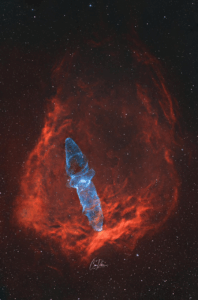
To most people, this might just look like a pretty picture. But to astrophotographer Cem Diken, it’s the result of three years of chasing a nearly invisible ghost in the

I was born in Guadalajara, I’m 38 years old, a musician, communications and electronics engineer, and president of the Guadalajara Astronomical Society A.C. since 2020. First Contact with Astronomy Since
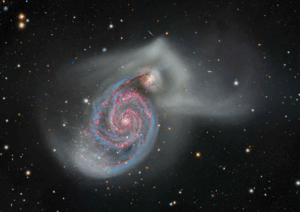
This stunning collaborative project comes from astrophotographers Alex Linde and Thomas Hansson, who joined forces across borders to photograph the Whirlpool Galaxy from Sweden, Poland, and Texas, USA. Thomas traveled across
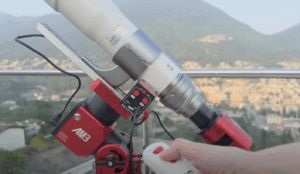
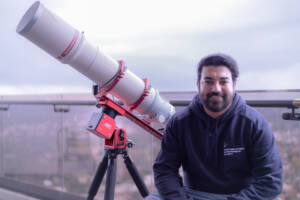
“Two thoughts immediately crossed my mind—the vastness of the cosmos, and that I could also create images like the ones that inspired me.” ” If you spend more time debugging than